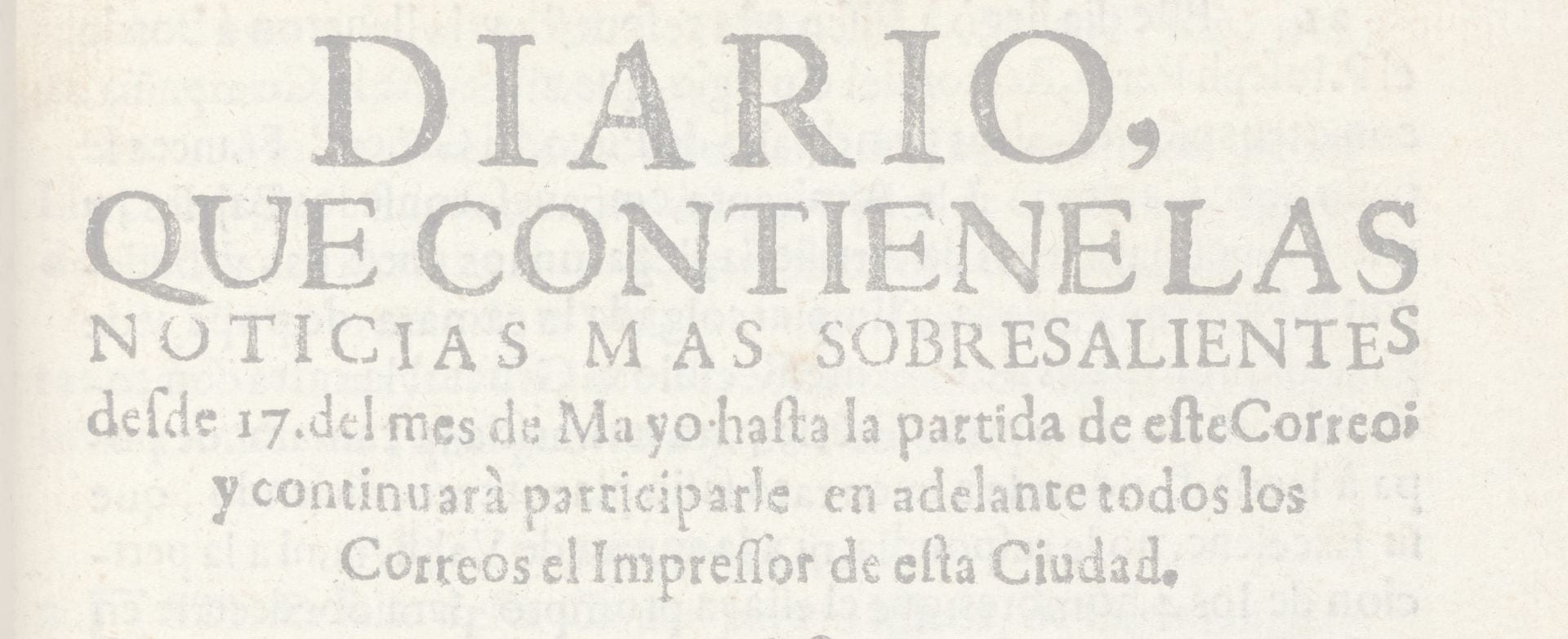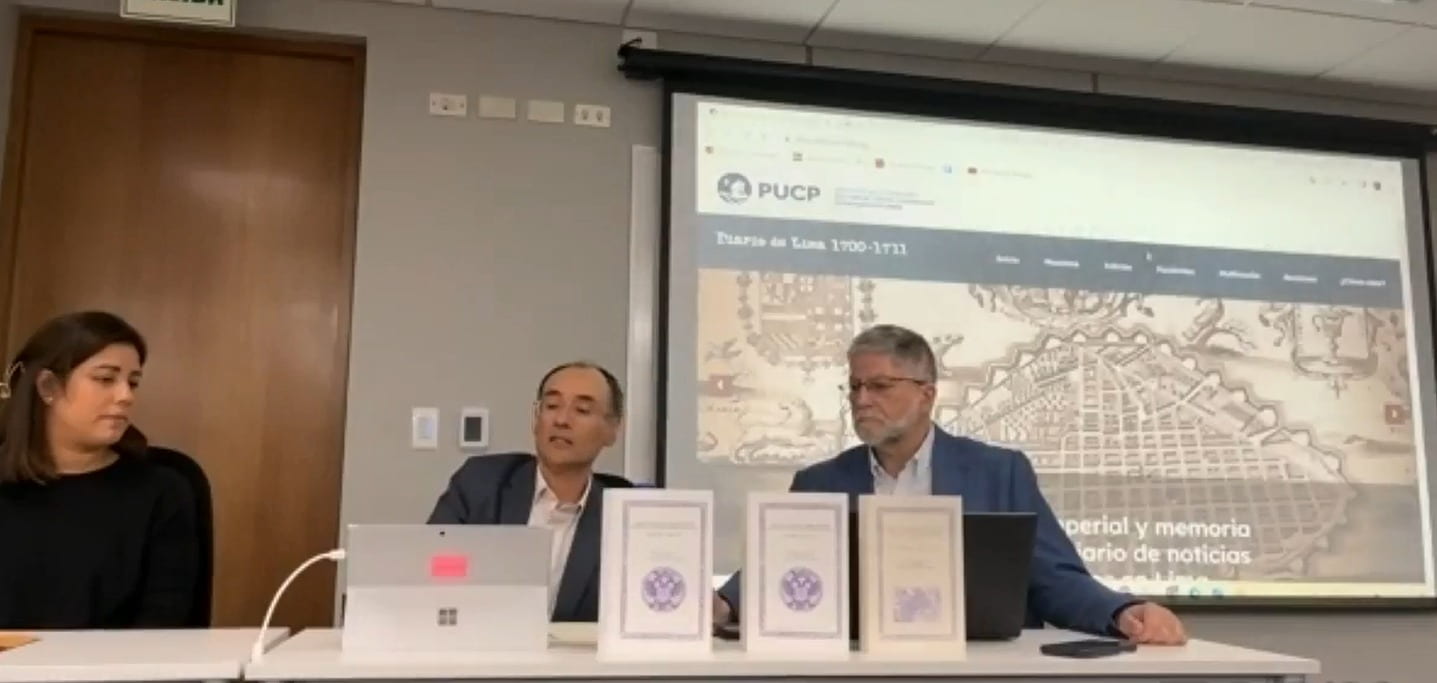In July 2023, textual scholars of Early Modern Spanish America, Paul Firbas (Stony Brook University) and José Antonio Rodríguez Garrido (Pontificia Universidad Católica del Perú), released the second and final volume of Diario de noticias sobresalientes en Lima y Noticias de Europa, covering the newssheets printed in Lima between 1706 and 1711 by Joseph de Contreras y Alvarado. These years represent the closing phase in the publication of the earliest periodical newssheets from the Americas, which came to an end in December 1711. The first volume, published in 2017, covered the years 1700–1705. Together, the two volumes provide scholars and general readers with a complete twelve-year corpus of information and narratives concerning Lima, the viceroyalty of Peru, and Europe, locally produced in response to a European crisis. Comprising nearly one thousand pages in Spanish, this annotated edition offers an exceptional new source for the history of South America, transatlantic Iberia, and the early development of global journalism.
Like the first, this second volume offers a scholarly transcription of the printed news in modernized Spanish, accompanied by footnotes addressing lexical issues, cultural references, intertextuality, and sources of information. It also presents a new study on news production in Lima during the difficult transatlantic and local context that followed the government of Viceroy Conde de la Monclova, a period marked by political instability. The material spans January 1706 to December 1711, the most critical years of the War of the Spanish Succession and, in the Viceroyalty of Peru, the governments of the Marquis of Castell dos Rius and, in part, Archbishop Diego Ladrón de Guevara. The Lima newssheets are significant not only as a unique record of information and news circulation in the viceroyalty, but also as a complete series of about one hundred impresos sueltos—whose precise separation is not always clear—published without interruption over twelve years. All this material was compiled in Lima at the beginning of 1712, probably in the same printing workshop, and is now preserved in the New York Public Library. It is worth underscoring that in the field of journalism studies of the ancien régime and media history, both in Europe and the Americas, modern annotated editions of complete news series are exceedingly rare—making this two-volume edition particularly exceptional.
The newsprints from Lima and Europe included in this second volume primarily reflect the history of the elites in the Viceroyalty of Peru, notably powerful local merchants operating within a context of intense French smuggling in South America, as well as aspects of daily life in a city profoundly shaped by the European war. The local reports reveal prevailing social hierarchies and the active role of diverse civil and religious institutions, while also recording city festivals, political celebrations, and popular devotions. Ultimately, the Diario de noticias underscores the significance of Lima’s editorial and printing workshop both as an instrument of government and as a hemispheric news hub within the Hispanic Monarchy.
The two volumes, the result of nearly two decades of work by professors Paul Firbas and José Antonio Rodríguez Garrido, have been published by the Instituto de Estudios Auriseculares (IDEA) in a limited print edition and are also freely available in digital format. In addition, facsimiles of all Lima newssheets (1700–1711) can be accessed online in separate PDFs, with page numbers corresponding to both edited volumes.
This research and publication were funded by Stony Brook University and the Pontificia Universidad Católica del Perú, with additional support from the Universidad de Navarra (GRISO), Universidad del Pacífico (Perú) and the Fundación Pía de los Pizarro.
More information in English is available on Prof. Paul Firbas’s site. The two volumes and facsimiles can be accessed on the Diario de Lima new website.
Book presentation in Lima, August 2023, PUCP. Fron left to right: Prof. María Gracia Ríos, Prof. Paul Firbas and Prof. José A. Rodríguez Garrido. Full video here.


